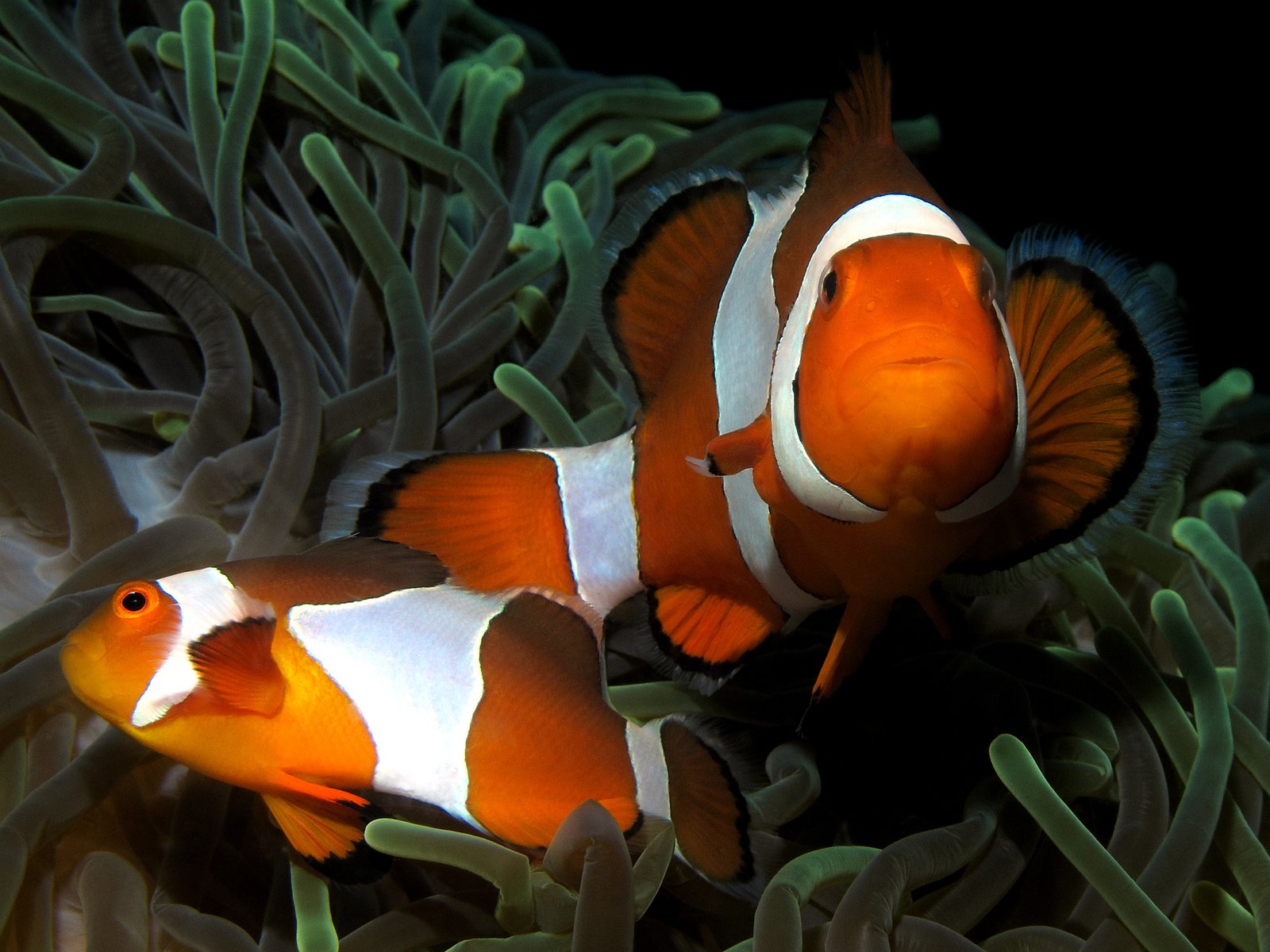Why don't anemonefishes get stung?
On this page...
Over the years many theories have tried to explain why anemonefishes are not stung by their host anemones.
Anemones capture prey and protect themselves by using stinging capsules called nematocysts. Nematocysts contain a harpoon-like spine that is fired into the tissue of prey or potential predators.

© William Tan
It has been suggested that the tentacles of the anemones that host anemonefishes lack nematocysts. This is not true.
A second theory proposed that anemonefish avoid the tentacles of the host anemone. In some species this is true, but most species do swim between the tentacles and 'sleep' on the oral disc of the anemone at night.
A third theory stated that anemonefishes have very thick skin that protects them from the anemone's nematocysts. This turns out not to be true. The skin of an anemonefish is no thicker than that other damselfishes, which can be stung by nematocysts.
It has also been suggested that when an anemonefish is in the tentacles of an anemone, the anemone does not fire its nematocysts. This is not true because anemones have been observed feeding while the host anemonefishes are between the tentacles.
The currently accepted explanation is that anemonefishes are not stung because they have a protective agent in the mucus that coats their bodies. The interesting question is how do anemonefishes build up this protective coating?
There are two current theories. One is that during several hours of 'acclimatisation' swimming the fish smears mucus from the anemone onto its body. In the same way that the mucus prevents the anemone from stinging itself, it will likewise protect the anemonefish.
The second theory is that the mucous coating of anemonefishes lacks the component that stimulates anemones to fire their nematocysts.
There is evidence to support both theories. For anemonefish species that live in several different species of anemones, the acclimatisation theory may be more relevant. On the other hand, the natural mucus theory may be more relevant for anemonefish species that are host specific.
Further reading
- Fautin D.G & Allen. G.R. 1992. Anemone Fishes and their host Sea Anemones. A guide for aquarists and divers. Western Australian Museum. Pp. 160.




